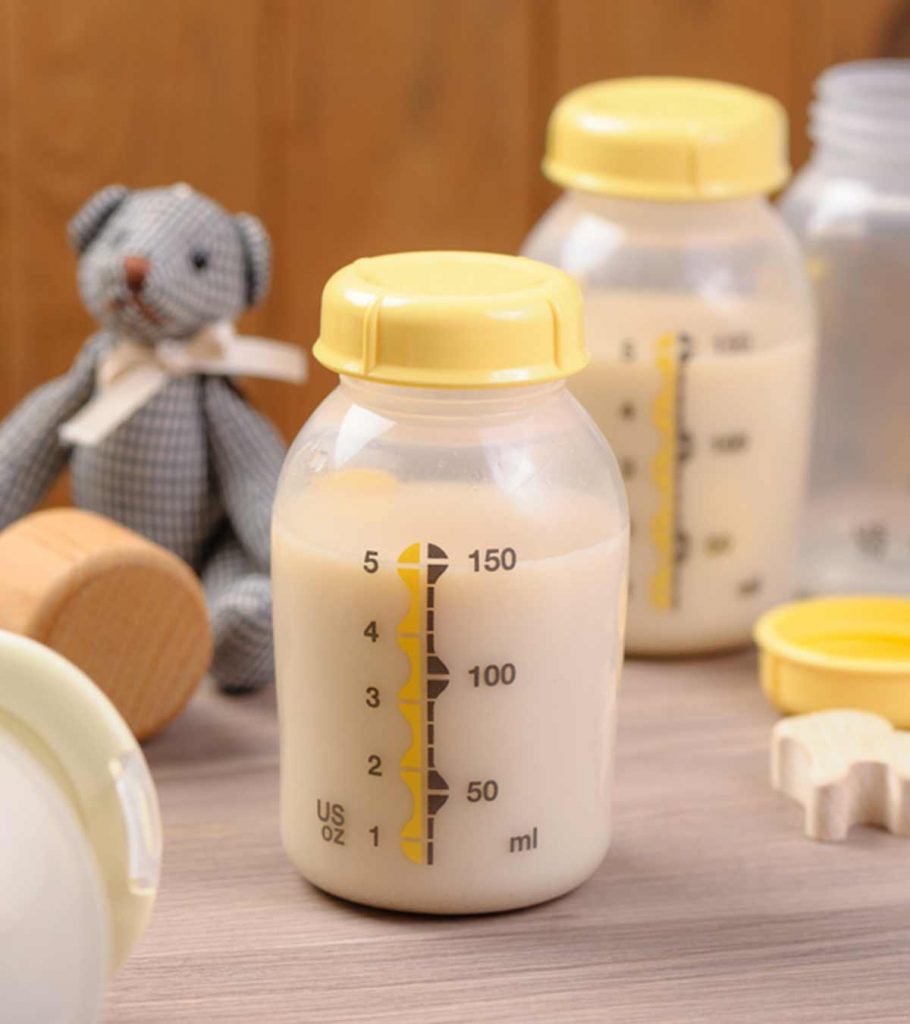Image: Shutterstock
If your breast milk smells and tastes off or soapy, it could be due to high lipase activity. Lipase is an enzyme naturally found in breast milk. This enzyme has several benefits, such as hydrolyzing milk fat into easily digestible and absorbable fatty acids. Parents share that babies refuse to breastfeed or bottle-feed expressed milk due to these changes.
Besides, they feel apprehensive about these changes and worry if the milk is fit for babies. If you are a new mother or soon to be one, knowing about the changes in breast milk’s taste and smell due to lipase can help avoid undue speculations.
This post tells you about lipase activity in human breast milk, its causes, and effective ways to manage it.
Causes Of High Lipase In Breast Milk
There’s no evident cause as to why breast milk could develop high lipase content. It’s simply the case that some mothers have excess lipase in their breast milk while others don’t. Lipase is an enzyme in breast milk that facilitates digestion and absorption of nutrients, especially fats.
Stored expressed breast milk is believed to have high lipase levels that hasten the milk break down, altering milk’s taste and smell (1). Even then, some mothers report no change in their milk’s smell or taste. In either case, properly stored breast milk is safe, and its off smell and flavor don’t indicate it is unfit for the baby.
Does High Lipase Milk Affect The Baby’s Health?
No clinical evidence demonstrates the short- or long-term effects of high lipase breast milk on an infant’s health. There are no known adverse effects, as well. The changes in the flavor and taste of stored milk happen due to lipolysis, which has antimicrobial effects that prevent microbial growth in thawed refrigerated breast milk (2).
It could mean that these changes are favorable for your baby. In fact, a study showed that lipase in breast milk could compensate for pancreatic lipase functions during infancy, helping in healthy growth, particularly in preterm infants (3). If you still don’t find your breast milk smell or taste appropriate, check your breast pump parts, storage containers, and consult a pediatrician. You may also consider avoiding strong-smelling foods, such as garlic and fish.
Can You Test Lipase In Breast Milk, At Home?
Although lipase activity in breast milk is a normal activity, if you wish to determine it, you can do it right at home with the following steps.
- Express some breast milk, store it in a suitable container, and freeze or refrigerate. You may taste a small quantity of milk to determine its flavor and odor before storing it.
- Let the container stay in the freezer or refrigerator for one to two days.
- After the stipulated time, check the odor and taste. If the milk smells and tastes off or soapy, it is highly likely that your breast milk has a high lipase content.
If your milk has high lipase content and your baby refuses to feed, you may try some interventions.
Tips To Mask Off Breast Milk Smell And Flavor
Here are some steps to resolve your milk’s smell and taste due to high lipase activity.
- Don’t store breast milk for too long. Ideally, the baby should consume the expressed milk within a few minutes. Nevertheless, it may not always be possible. Therefore, label the milk containers with the date of pumping before storing them.
- Note the time as to when the milk turns sour and smells off. Following this timeline will help determine the approximate time when your stored milk changes flavors due to lipase activity. In most cases, the shift in the milk’s taste occurs after 24 hours of storage. So, pump and store milk accordingly to avoid milk wastage.
- Try scalding. According to lactation experts, scalding fresh expressed milk before storing can deactivate lipase. Scalding milk involves heating it until it just begins bubbling around the edges and not boiling (4). Boiling milk isn’t advisable as it can destroy the essential nutrients. Experts suggest heating breast milk in a pan below 180°F (82.2°C).
- Mix stored milk with freshly expressed milk or solids. You can mix stored milk with freshly expressed milk to mask its flavor before serving it to the baby. For older babies who consume breast milk along with solids, you can add solids to breast milk. Oatmeal and infant cereals are some safe foods that you can add to breast milk.
Other than these measures, altering breast pumps speed and pressure might also help prevent changes in breast milk’s taste and smell. You may also ensure that the breast pump and its parts are sterile to prevent bacterial contamination, which could also alter breast milk’s taste and flavor.
Breast milk is vital for babies. Its taste and smell are some of the factors that affect the baby’s appetite. A baby might stop feeding stored breast milk due to these changes. But, rest assured, the soapy taste and smell of properly stored milk are mostly safe, provided the cause is high lipase activity and not something else. If you are concerned about the possible cause of the milk’s soapy flavor, do not hesitate to speak to a lactation consultant.
